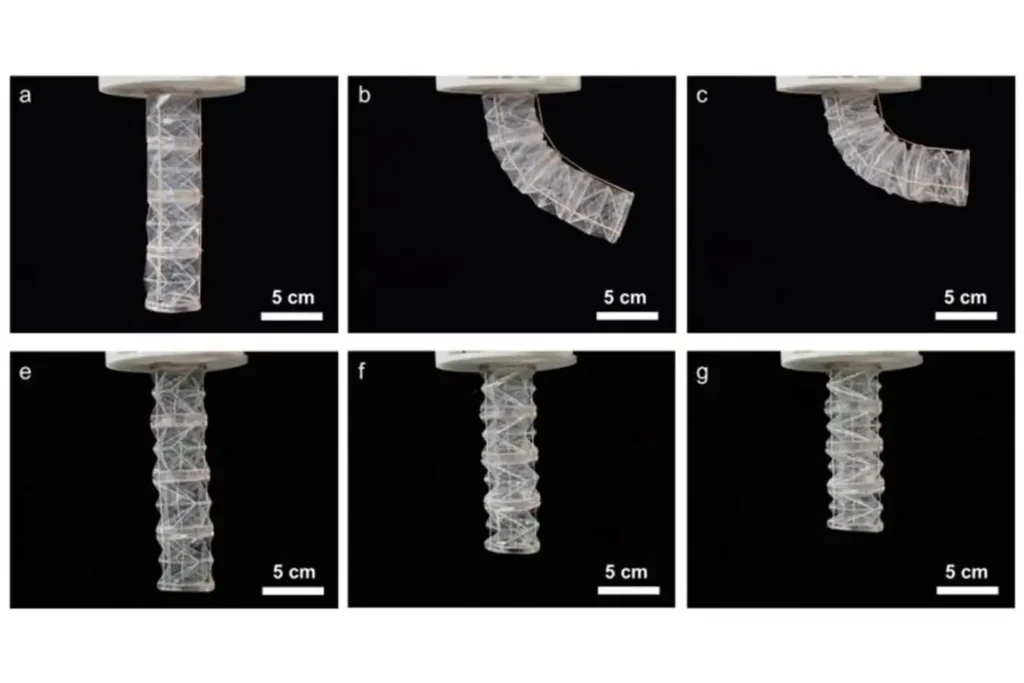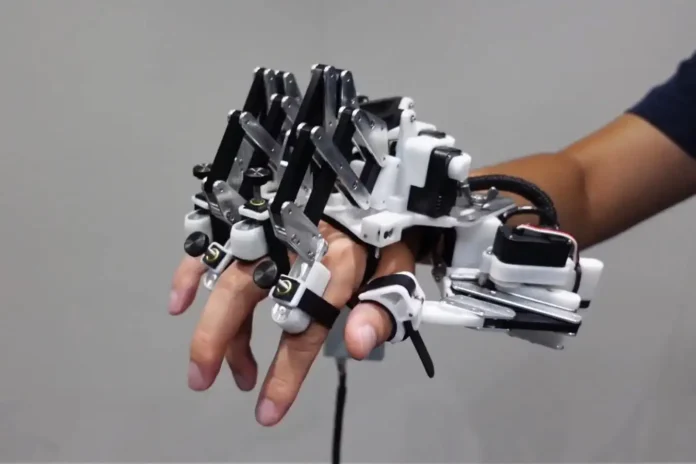The Future of Robotics: Sustainable and Biodegradable Solutions
As industries worldwide continue to embrace automation and robotics, sustainability has become a key consideration in their development. The demand for biodegradable soft robots is growing rapidly, offering innovative solutions for medical procedures, environmental monitoring, disaster relief, and industrial applications. These cutting-edge technologies present a viable alternative to conventional robots, reducing long-term waste and minimizing environmental impact. By integrating biodegradable materials into robotic design, researchers are paving the way for sustainable, eco-conscious solutions in various fields.
A recent breakthrough in this field involves an origami-inspired robotic arm, created from natural, biodegradable materials. Researchers have successfully developed a robotic arm constructed from cellulose derived from cotton plants and gelatin sourced from pigs. This pioneering design ensures that the robot degrades naturally once it reaches the end of its lifespan, addressing concerns surrounding robotic waste accumulation. Such innovations mark a significant step toward environmentally friendly robotic solutions while maintaining high functionality and versatility.
The Science Behind Biodegradable Soft Robots
At the forefront of this development is a team of researchers at Westlake University in Zhejiang, China, led by Hanqing Jiang. Their work has resulted in a 240-millimeter-long robotic arm composed of four Kresling origami modules. Unlike conventional soft robots that rely on synthetic polymers, this new approach employs biodegradable materials, ensuring a sustainable lifecycle without compromising performance.
Key Materials Used in the Robotic Arm:
- Cellulose from Cotton Plants: Provides structural integrity while maintaining a lightweight design, ensuring the robot remains agile and functional.
- Gelatin from Pigs: Serves as both a structural component and a sensor, allowing for precise movement tracking and control.
By strategically integrating these natural materials, the robotic arm maintains durability and flexibility while being fully biodegradable. The arm’s movement is controlled by three equally spaced threads running through its structure, which are manipulated by external motors. This setup enables multi-directional motion, making the robot highly adaptable for different applications.
A particularly innovative feature of this biodegradable robot is its sensing mechanism. The gelatin material changes electrical resistance when bent, allowing the system to precisely track its position in real-time. This function is crucial for applications that require delicate and precise control, such as medical procedures or environmental interactions. Additionally, the use of biodegradable materials in sensing mechanisms could open new doors for sustainable bioelectronic applications.
Potential Applications in Medicine and Industry
Medical Procedures
One of the most promising applications of this biodegradable soft robot is in medical procedures. Because it is made from natural, biocompatible materials, it could be further developed to:
- Assist in minimally invasive surgeries by navigating inside the human body.
- Deliver targeted treatments in hard-to-reach areas.
- Dissolve naturally once its function is complete, eliminating the need for surgical removal.
- Act as a temporary support structure for healing tissues and wounds before biodegrading harmlessly.
- Function as a biodegradable implant for controlled drug delivery, reducing the risk of long-term complications from foreign materials.

Industrial and Environmental Applications
Beyond healthcare, soft robots can revolutionize industrial processes, particularly in environments where traditional rigid robots are unsuitable. Some key applications include:
- Working in confined spaces, such as within machinery or delicate environments.
- Performing maintenance tasks where human access is limited or unsafe.
- Reducing robotic waste, as biodegradable components naturally degrade instead of accumulating in landfills.
- Assisting in agricultural processes, such as automated planting, weeding, or soil analysis, without contributing to pollution.
- Monitoring and repairing underwater ecosystems, where traditional robotic waste poses a serious threat to marine life.
Disaster Relief and Environmental Monitoring
Another significant application of biodegradable robots is in disaster relief and environmental monitoring. Since these robots decompose naturally, they can be used in sensitive ecosystems without harming the environment. Potential uses include:
- Deploying autonomous biodegradable robots to assess structural damage after natural disasters like earthquakes or hurricanes.
- Collecting environmental data from remote or hazardous locations, such as monitoring pollution levels in water bodies or tracking wildlife behavior.
- Acting as temporary surveillance tools for rescue missions, providing crucial information before breaking down naturally.
The Future of Biodegradable Robotics
Soft robotics is still a developing field, with many exciting possibilities on the horizon. According to Kaspar Althoefer at Queen Mary University of London, soft robots could play an essential role in future applications, including:
- Enhanced interaction with humans, particularly in assistive technologies, rehabilitation, and prosthetics.
- Surgical advancements, where robots could be left inside the body to degrade safely without requiring additional procedures for removal.
- Sustainable robotics, reducing waste as more robotic systems are deployed globally, leading to a lower environmental footprint.
- Integration with artificial intelligence to create responsive biodegradable robots that adapt to their surroundings in real time.
- Advancements in bioelectronic sensors to enhance biodegradable robots’ ability to interact with biological systems more effectively.
While current materials degrade naturally in the external environment, further research is required to develop versions that fully biodegrade within the human body without any adverse effects. Scientists are exploring new composite materials that combine structural durability with improved biocompatibility to expand the potential applications of biodegradable robotics. Additionally, advancements in energy storage solutions, such as biodegradable batteries, will be essential for creating fully sustainable robotic systems.
Challenges and Ethical Considerations
Despite the immense promise of biodegradable robotics, several challenges remain:
- Material Performance: Natural materials often lack the durability of synthetic alternatives, limiting their operational lifespan.
- Degradation Control: Researchers need to refine degradation rates to ensure that robots break down at predictable intervals in various environments.
- Cost and Scalability: Producing biodegradable robots on a large scale must be cost-effective to encourage widespread adoption.
- Ethical Concerns: The use of animal-derived materials, such as pig gelatin, raises ethical questions that could drive research into plant-based or lab-grown alternatives.
Overcoming these challenges will require collaboration between material scientists, robotic engineers, and policymakers to ensure biodegradable robotics become a mainstream, ethical, and sustainable solution.
Conclusion
The advent of biodegradable soft robots represents a crucial step toward sustainable and adaptive robotic technology. As research continues, these robots could significantly impact medicine, industry, disaster relief, and environmental sustainability. With advancements in materials science and robotic engineering, the future of soft, eco-friendly robotics looks incredibly promising.
By integrating biodegradable materials into robotic designs, we can move toward a future where automation coexists with nature, minimizing technological waste while maximizing innovation. The continued evolution of biodegradable robotics will not only enhance efficiency and adaptability across various fields but also contribute to a cleaner, more sustainable world.
Stay tuned for more updates on the latest breakthroughs in robotics, sustainability, and medical technology!



This breakthrough has the potential to revolutionize both medicine and industry. The future of robotics is truly sustainable and innovative!